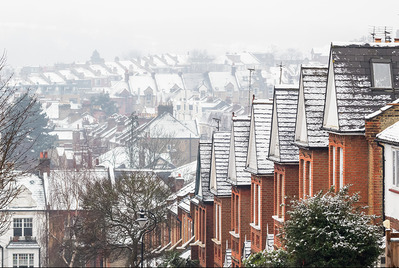The government recently gave local authorities the power to fine rogue landlords up  to £30,000 and (from April 2018) issue banning orders to the worst offenders, stopping them from letting in the future. But these still rely on tenants raising issues themselves and having to keep chasing their local authority for progress, which can be daunting, not to mention time consuming.
to £30,000 and (from April 2018) issue banning orders to the worst offenders, stopping them from letting in the future. But these still rely on tenants raising issues themselves and having to keep chasing their local authority for progress, which can be daunting, not to mention time consuming.
As it stands, if a private tenant has a complaint about their home and their landlord, they have to go to the council and ask them to take action against the landlord under the Housing Health and Safety Rating System (HHSRS). The problem is that the way Environmental Health Officers inspect properties, issue notices and actually enforce them varies wildly across the UK. The sad reality is that action is generally only taken against a very small percentage of properties with hazards, mainly because councils just don’t have the resources to pursue every landlord who’s providing sub-standard accommodation.
In response to this, Karen Buck, Labour MP for Westminster North, has just introduced a Private Members’ Bill to parliament that proposes giving all tenants the power to take direct action against their landlord, in the same way that their local authority can. That means tenants would be able to insist their landlord puts right any problems or hazards in their home and could pursue them for compensation if they didn’t.
The Bill is already backed by the government and a several high-profile organisations, including Shelter, the Residential Landlords Association and the Chartered Institute of Environmental Health Officers. It proposes:
that all landlords (both social and private sector) must ensure that their property is fit for human habitation at the beginning of the tenancy and throughout; and
where a landlord fails to do so, the tenant has the right to take legal action in the courts for breach of contract on the grounds that the property is unfit for human habitation.
At Your Move, all the properties we let and manage already meet the highest standards of health and safety. We thoroughly inspect and make periodical checks on every property to make sure they stay free from potential hazards. If we come across problems like surface mould or condensation, we instruct our maintenance team to put them right and then make recommendations to our landlords for improvements they should carry out to make sure issues don’t recur.
We know that when tenants feel safe and comfortable, they’re more likely to stay longer in a property and to treat it well, so it’s in all landlords’ interests to maintain their Buy to Lets well. And we welcome any legislation that means landlords are legally obliged to provide what’s simply a decent standard of living for tenants. Although some tenants have no problem going to their local council about substandard conditions, we know others worry about taking issues to the next level and making an ‘official’ complaint.
Hopefully, as & when this Bill becomes law, tenants will be reassured that it’s their legal right to complain directly to their landlord and insist that health and safety issues are put right.
In a government press release, Sajid Javid, Secretary of State for Housing, said: “Everyone deserves a decent and safe place to live...and I am determined to do everything possible to protect tenants. That is why the government will support new legislation that requires all landlords to ensure properties are safe and give tenants the right to take legal action if landlords fail in their duties.”
Read the full release on the GOV.UK website.
If you currently manage your Buy to Let yourself, here are 5 key things you should check regularly, to keep your tenants safe:
Surface mould in the bathroom
If a bathroom isn’t ventilated properly, moisture will build up and develop into black surface mould, which often forms above showers and collects in the corners of the room. Clean the mould off and paint the ceiling and walls with anti mould, steam-resistant paint that’s specially designed for bathrooms. Make sure there’s an extractor fan and/or a window that can be opened easily, and remind your tenants to ventilate the room while they’re using it, leaving the fan on or window open until all the steam has escaped.
Surface mould in other rooms
In the same way as in the bathroom, when moisture can’t escape from other rooms, it settles as damp. And if it’s left, it can easily turn into mould on any surface. According to Envirovent1, a family of four can produce as much as 100 pints of water vapour every week, and that’s got to end up somewhere! So check every room in the property – particularly kitchens and any room where tenants are hanging washing to dry - for patches of small black marks. Again, clean off any surface mould with a suitable product and remind your tenants to ventilate rooms properly.
Condensation on windows and sills
Condensation forms on windows when there’s a big difference between the temperature inside and outside and if there’s too much humidity in the property. It’s more likely to occur if the property isn’t double glazed, so if you can afford to upgrade your windows, that should help avoid condensation – and it’ll increase the value of the property. If you do find condensation a problem, advise your tenants to wipe down the windows and sills as soon as they notice water forming and ask them to try to keep the temperature inside reasonably constant.
The inside temperature
The government advises that the temperature inside a home should be between 18 and 21 degrees celcius. At that level, the property should be warm enough for your tenants and help keep the risk of damp and mould to a minimum. So check the thermostat, have the boiler serviced every year and make sure the property has adequate roof and wall insulation. (See our ‘5 Top tips for getting your property EPC compliant’ below for more advice on having an energy-efficient property.)
Smoke detectors and heat sensors
When you make your periodical checks, always test the alarms – and it’s a good idea to change the batteries at least once a year. If you’ve got any solid fuel appliances in the property (e.g. an open fire or log burner), you should also provide and regularly check a carbon monoxide detector.
Sources:
https://www.gov.uk/government/news/government-supports-new-measures-to-improve-the-safety-of-tenants
The Your Move Content Marketing Team



